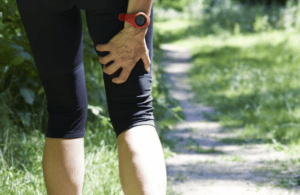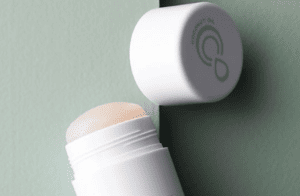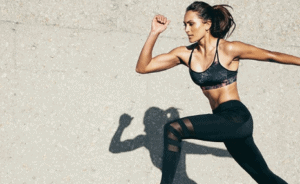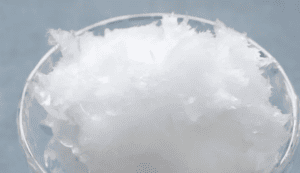9 Tips to Prevent Chafing While Exercising
-
 By
Clara Jennings
By
Clara Jennings
Chafing is a type of skin irritation that’s caused by friction. It occurs when the skin rubs against itself repeatedly, which can cause a stinging or burning sensation.
Over time, however, the movements can wear away the skin, causing redness, swelling, bleeding, or crusting.
While you can develop chafing anywhere on your body, it’s commonly seen on the inner thighs, groin, feet, armpits, and buttocks, as those areas tend to rub against clothing, especially when you’re running.
Table of Contents
ToggleCommon Causes of Chafing
 Chafing occurs due to repeated rubbing and is more likely to occur if the skin is moist as that makes it more prone to breaking down.
Chafing occurs due to repeated rubbing and is more likely to occur if the skin is moist as that makes it more prone to breaking down.
That’s why it’s commonly seen among those who exercise – since your skin will become more sensitive if it’s covered with sweat. Repeated motions from working out can also contribute to the problem.
Ill-fitting clothes can also cause chafing. For instance, you might experience chafing if your sleeves rub repeatedly on your skin. That’s why it’s so important to wear proper garments when you’re exercising.
How to Treat Chafing Thighs
Stop whatever you’re doing immediately if you’re experiencing chafing. Change into more comfortable clothes, if necessary.
To soothe the chafed skin, you can apply a bit of petroleum jelly after patting the area dry.
Applying a soothing balm, oil, or lotion to the skin can also help. Using an aloe vera gel can also help alleviate pain.
Given that you stop the activity, chances are, it’ll heal within a few days.
Avoid exposing the area to hot water or harsh soaps as that can dry out the skin, which can slow down the recovery progress.
Be sure to keep it dry, ideally for a couple of days. That will give the area time to heal.
If you can, wear breathable pajamas or clothing while it’s healing. Avoid working out until the skin has completely healed.
Complications From Chafing
Most cases of chafing will heal on their own. Rarely, however, they can lead to complications.
For example, bacteria and germs can enter the wound site and cause secondary skin infections.
Seek medical attention if you notice any discoloration, crusting, swelling, or bleeding. Depending on the situation, your doctor might prescribe a steroid cream for you to apply to the area.
How to Prevent Thigh Chafing – 9 Best Tips
There are several ways to prevent inner thigh chafing, here are some of them:
1. Always Use Deodorant
 Sweat increases the risk of chafing. By using deodorant, you will reduce the amount of sweat on the skin, which will lower the risk of armpit chafing and irritated skin.
Sweat increases the risk of chafing. By using deodorant, you will reduce the amount of sweat on the skin, which will lower the risk of armpit chafing and irritated skin.
For extra protection, you can use a deodorant that contains a moisturizer – that will add a layer of protection to your skin.
If you’re prone to chafing, you can also apply a thin layer of deodorant to the problem areas before exercising.
For instance, you can apply it to your inner thighs if they tend to rub together during exercise. If necessary, reapply the deodorant after a few hours. The goal is to prevent yourself from sweating before it starts to become an issue.
2. Apply a Lubricant
Anti-chafing products such as lubricants can help prevent chafing by creating a layer between your skin and your clothes, which will make your skin less vulnerable to friction.
There are various types of lubricants to choose from as well. For example, there are creams, powders, and oils. While they all work, powders tend to be less effective as there’s a possibility of clumping.
Similar to deodorants, you want to apply the lubricant to target areas that are prone to chafing such as your thighs, groin, and armpits. Consider bringing a travel-size tube with you so that you can touch it up during your exercise routine.
3. Wear Moisture-Wicking Clothes
 The fabric your clothes are made of can contribute to chafing. Take cotton shirts, for instance, the material tends to retain sweat, which will keep your skin moist, increasing your risk of chafing.
The fabric your clothes are made of can contribute to chafing. Take cotton shirts, for instance, the material tends to retain sweat, which will keep your skin moist, increasing your risk of chafing.
The same goes for skin-tight clothes. That’s why it’s so important to wear something comfy when you’re exercising.
More specifically, you want to opt for garments made of moisture-wicking fabrics such as polyester or nylon.
Unlike cotton, these types of fabrics do not retain moisture. Instead of being absorbed into the fibers, the sweat will travel to the surface where it’ll evaporate. That will prevent skin rubbing, which can lead to nipple chafing.
4. Invest in Anti-Chafing Undergarments
Anti-chafing undergarments are typically made of polyester or nylon and can prevent your skin from rubbing against itself.
They’re not just for exercise either; you can easily wear them under casual wear.
5. Choose Seamless Clothing
The seams in your pants can contribute to inner thigh chafing. The same goes for your tops or bras.
Given that, it’s best to avoid activewear with prominent seams that can rub against your skin; this is especially true for those with sensitive skin.
For instance, you can choose a shirt that’s fitted into the armpit. Avoid wearing underwear altogether if you’re cycling as it can increase the chances of friction between your skin.
6. Make Your Own Anti-Chafing Cream
 You can easily make your own anti-chafing cream with two ingredients: coconut oil and cornstarch. If you want, you can also add a bit of essential oil for fragrance.
You can easily make your own anti-chafing cream with two ingredients: coconut oil and cornstarch. If you want, you can also add a bit of essential oil for fragrance.
Mix the two ingredients in a small bowl (you can play around with the ratios but we’ve found that 1.5 part coconut oil to 1 part cornstarch works best) and you should get something that resembles a paste, which you can apply to your skin.
7. Wear Soft Bandages
Bandages aren’t just for wounds; they can also prevent chafing. More specifically, they’ll add a second layer of ‘skin’, which will help reduce friction.
You can apply them anywhere on your body including the inner thighs, feet, and nipples. While you can use any type of adhesive bandage, some companies do make special tapes for this kind of purpose.
8. Take Off Wet Clothes
Never keep wet clothes on. It doesn’t matter whether it’s wet from sweat or the rain – you want to change out of them as soon as possible.
The same thing goes for swimsuits. Don’t lounge in them once you’ve gotten out of the water; you don’t want to have tight, wet fabric on your skin.
9. Take the Weather Into Consideration
 Planning on going for a run? Avoid the mid-day sun; aim for the cooler periods in the morning or evening. That way, you won’t be sweating nearly as much.
Planning on going for a run? Avoid the mid-day sun; aim for the cooler periods in the morning or evening. That way, you won’t be sweating nearly as much.
That will help keep your skin dry, which will lower the risk of chafing.
How to Prevent Chafing – FAQs
What’s the best way to treat thigh chafing?
Change your clothes if your chafing is caused by ill-fitting garments. To soothe the raw skin, you can apply a bit of petroleum jelly or a soothing balm or lotion to the area.
Aloe vera can also help ease the pain.
Can you prevent skin chafing with baby powder?
Baby powder can help absorb excess moisture, which will help prevent chafing. Simply apply the powder to the areas before running or exercising.
How can you stop thigh chafing?
Wear loose pants, ideally those without seams, when you’re exercising, and make sure to dry your skin regularly with a towel if you’ve been sweating. You can also add powder to your thighs to prevent chafing.
Can you use deodorant for thigh chafing?
Yes, deodorant isn’t just for the underarms – you can also use it on your inner thighs. Simply apply it to the skin and it will create a protective barrier, preventing your skin from rubbing against each other.
Do thigh bands work for chafing?
Thigh bands can help prevent chafing by preventing skin-to-skin contact when you’re exercising.
There are two types – plain and fancy. Plain ones are typically made from microfiber while the latter is lacy and resembles the top of lingerie.
To choose the proper size, measure your thighs where they touch. To ensure a tight fit, you may want to size down. Most anti-chafing thigh bands are backed with silicone and will be comfy even if they’re a bit small.
15% Off Amazon Coupon
×Click To Reveal The 15% Off Coupon Code For Your Entire ACTIVE Purchase At Amazon.com
Note: This promotional offer is only guaranteed through the end of the day.




